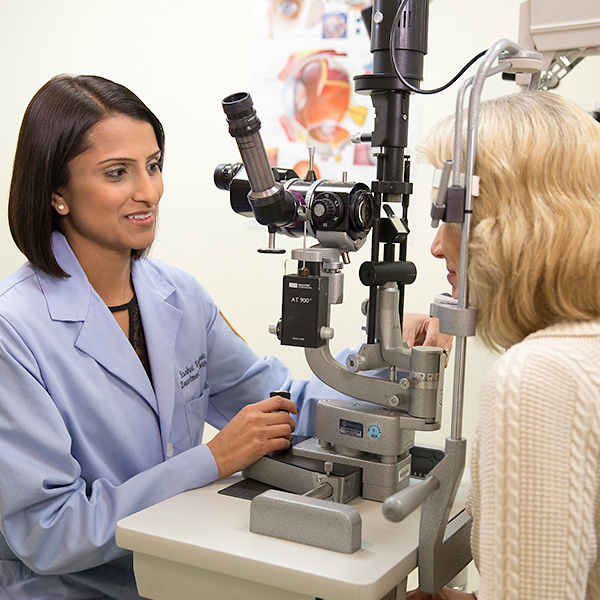Macular Hole
Overview and Facts about Macular Hole
A macular hole is a small hole in the macula, a part of the eye in the middle of the retina. The macula is made up of light-sensitive tissue that helps the eye focus; a macular hole results in blurry or distorted vision.
There are three different stages of macular holes. Stage I, also known as foveal detachments, are the least serious.
Without treatment, about 50% of Stage I macular holes progress to Stage II, or partial-thickness holes.
Without treatment, 70% of Stage II macular holes become Stage III and Stage IV or full-thickness holes.
Signs and Symptoms of Macular Hole
Because macular holes develop over time, you might not notice any major problems with your vision at first. The initial symptom is a slight distortion or blurriness as you try to focus on something straight ahead.
This blurriness might eventually become a dark or blind spot, making it difficult to read and perform other vision-heavy tasks.
Causes and Risk Factors of Macular Hole
Like many ophthalmological conditions, age is the top risk factor for developing a macular hole. Aging causes the retina and the vitreous, a gel-like substance that gives the eye its shape, to separate. This is a normal condition, and the empty space in your eye refills with natural fluids.
In some cases, however, the vitreous sticks to the retina, stretching out the macula and causing a hole to develop.
If you do develop a macular hole in one eye, you have a 10 to 15% chance of developing a macular hole in your other eye.
Other risk factors for macular holes include:
- Diabetic retinopathy
- Severe nearsightedness
- Eye injury or trauma
- Retinal detachment
Tests and Diagnosis of Macular Hole
The easiest way to diagnose a macular hole is through an eye exam. Your doctor will use eye drops to dilate your pupil so they can look at the structures inside your eye.
Next, they will likely use an optical coherence tomography (OCT) to take pictures of the back of your eye. Examining these photos should clearly show whether a macular hole has formed.
Treatment and Care for Macular Hole
The most common treatment for a macular hole is a surgery called a vitrectomy. In this procedure, a surgeon cuts into your eye and removes the vitreous pulling on the macula. They then replace it with a temporary bubble of air and gas that holds the macular hole in place so it can heal.
After surgery, you must lie face down for at least a couple of days to keep the bubble in place. Over time, your body can absorb the bubble and refill the area with natural fluids.

Request an Appointment
Whether you are seeking routine eye care or have a specific vision issue, our team treats a wide range of eye diseases and conditions, including cataracts, glaucoma, macular degeneration and strabismus. Schedule an appointment today.
Schedule a Telehealth Appointment
